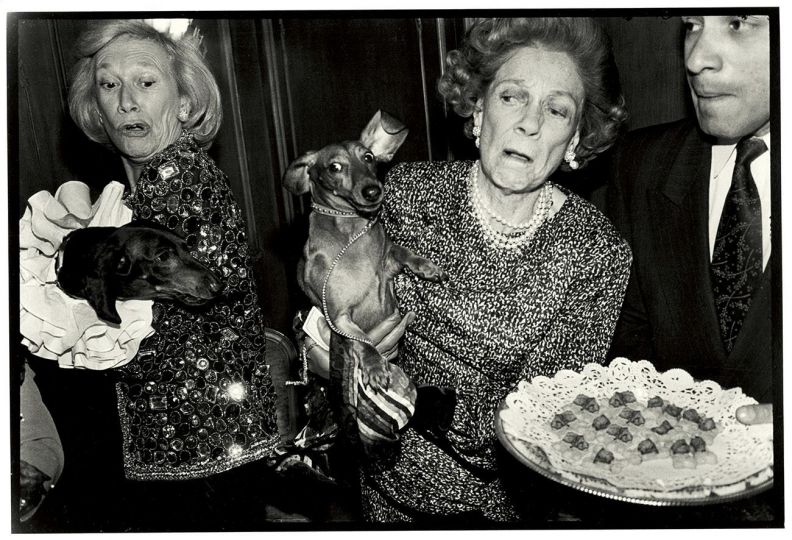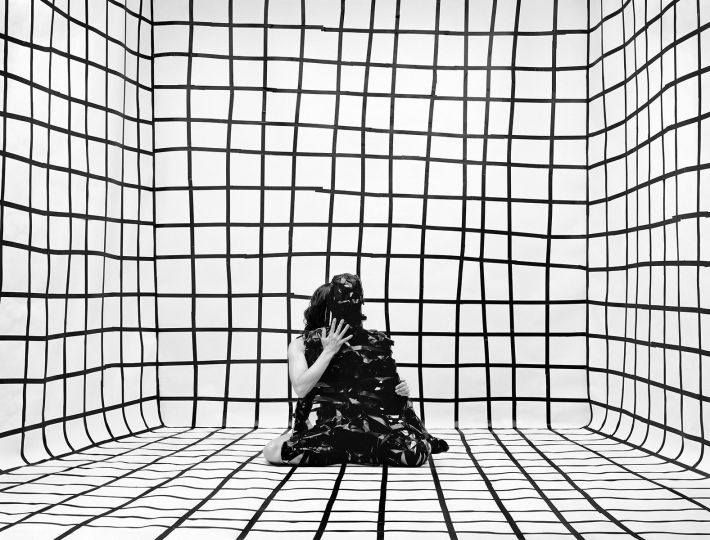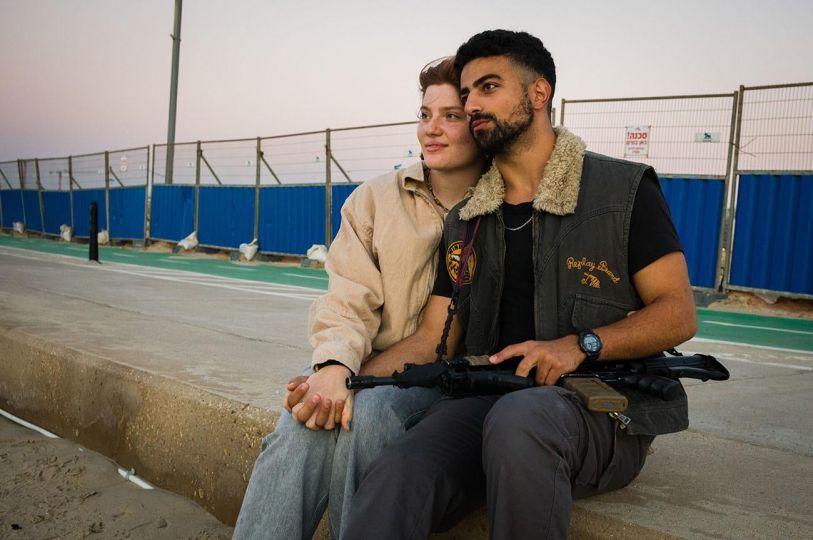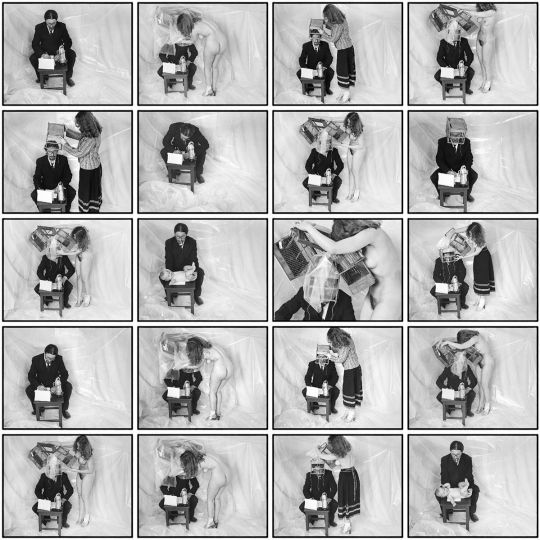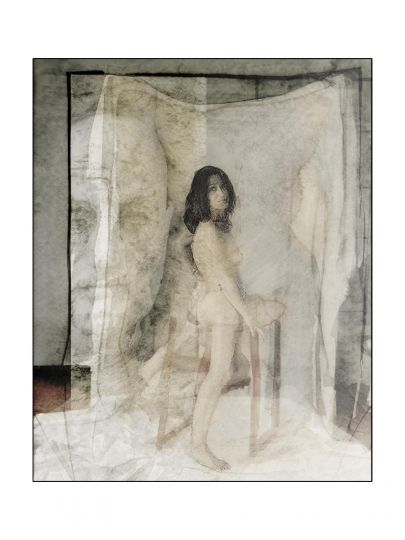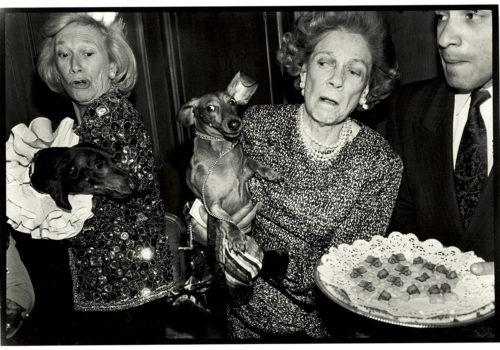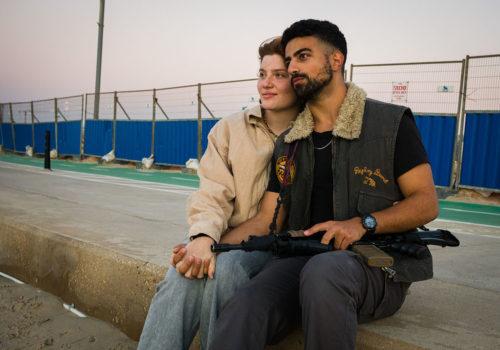The introduction to This Place – a large format photobook (32.00 x 30.00 cm) with the works of twelve contemporary photographers – states how Frédéric Brenner, the project initiator, hopes his project will offer a ‘visual counterargument to prevailing, often polarized, representations’ of Israel and the West Bank.
Whether the twelve photographers shared this utopian aspiration is hard to determine. The policy decision not to include any Israeli or Palestinian nationals was aimed at excluding those with entrenched positions on the subject matter and the photographers, given complete creative freedom, were outsiders who were not there to speak on behalf of any particular community. It is clear from some of their introductory comments in the book that they approached the project not suspiciously but warily.
Most of the photographs were taken between 2009 and 2012 and it is hard to see what, if any, ‘visual counterargument’ emerges from the pages of This Place. One of the twelve, Wendy Ewald, worked collaboratively by giving cameras to groups of people to take their own pictures. Not surprisingly, deep divisions come to the fore: a Palestinian crowd waiting to receive their relatives outside a prison in Jamila; settlers in East Jerusalem with a surveillance monitor in their living room for exterior cameras.
The book’s panoramic landscapes by Czech photographer Josef Koudelka reiterate the deep divisions of disputed land . He speaks of the wall being built by Israel in the West Bank as ‘a crime against the landscape’ and his monochrome shots bear this out with startling immediacy. His pictures show such fractured topographies as to suggest a place of ontological incompleteness. In one of his more forbidding shots, looking across to Al ‘Eizariya (Bethany) in East Jerusalem from behind rolls of barbed wire some distance away, part of the defensive barrier is shown close up, revealing each razor-sharp spike of the wire. Hostility is far from latent and, in another of Koudelka’s photographs, it writes itself into the landscape in the form of nine-metre-high concrete slabs winding around Shu’fat refugee camp in northeastern Jerusalem like an uncoiling snake.
Thomas Struth is also drawn to the grim spectacle of walled camps but there is a studied neutrality in his sixteen photographs for This Place that approaches inscrutability They include churches, hi-tech scientific machinery in Israel’s Weizmann Institute, the front yard of a block of flats in Tel Aviv and the outskirts of Ramallah.
The armoured vehicles, barbed wire and concrete walls exist alongside a human landscape and many of the contributors focus on individuals and groups of people. Struth photographs a Jewish family on the steps of their home and the brothers of a Bedouin tribe inside a tent in Negev. Frédéric Brenner’s contributions to the book, under the title of an ‘Archeology of Fear and Desire’, include many pictures of individuals, couples, families and groups that together make up the fragmented society of Israel and the West Bank.
In the foreground of Stephen Shore’s photograph of a large crater in the Negev desert we see a solitary abandoned vehicle. At a glance, it is hardly noticeable because its light colour blends in with the wide expanse of sandy rubble that dwarfs it. The pictorial clouding encapsulates the difficulty of providing a ‘visual counterargument to prevailing, often polarized, representations’ of Israel and the West Bank. Contested territory is traversed by a radical antagonism that makes the task close to impossible and the only common ground that does exist is summed up by the graffiti that Josef Koudelka noticed on a wall: ‘One wall, two prisons’.
– Sean Sheehan
This Place
Hatje Cantz
English
2019. 280 pp., 279 ills.
hardcover
32.00 x 30.00 cm
ISBN 978-3-7757-4616-8
https://www.hatjecantz.de/search-results-624-1.html?q=this+place


